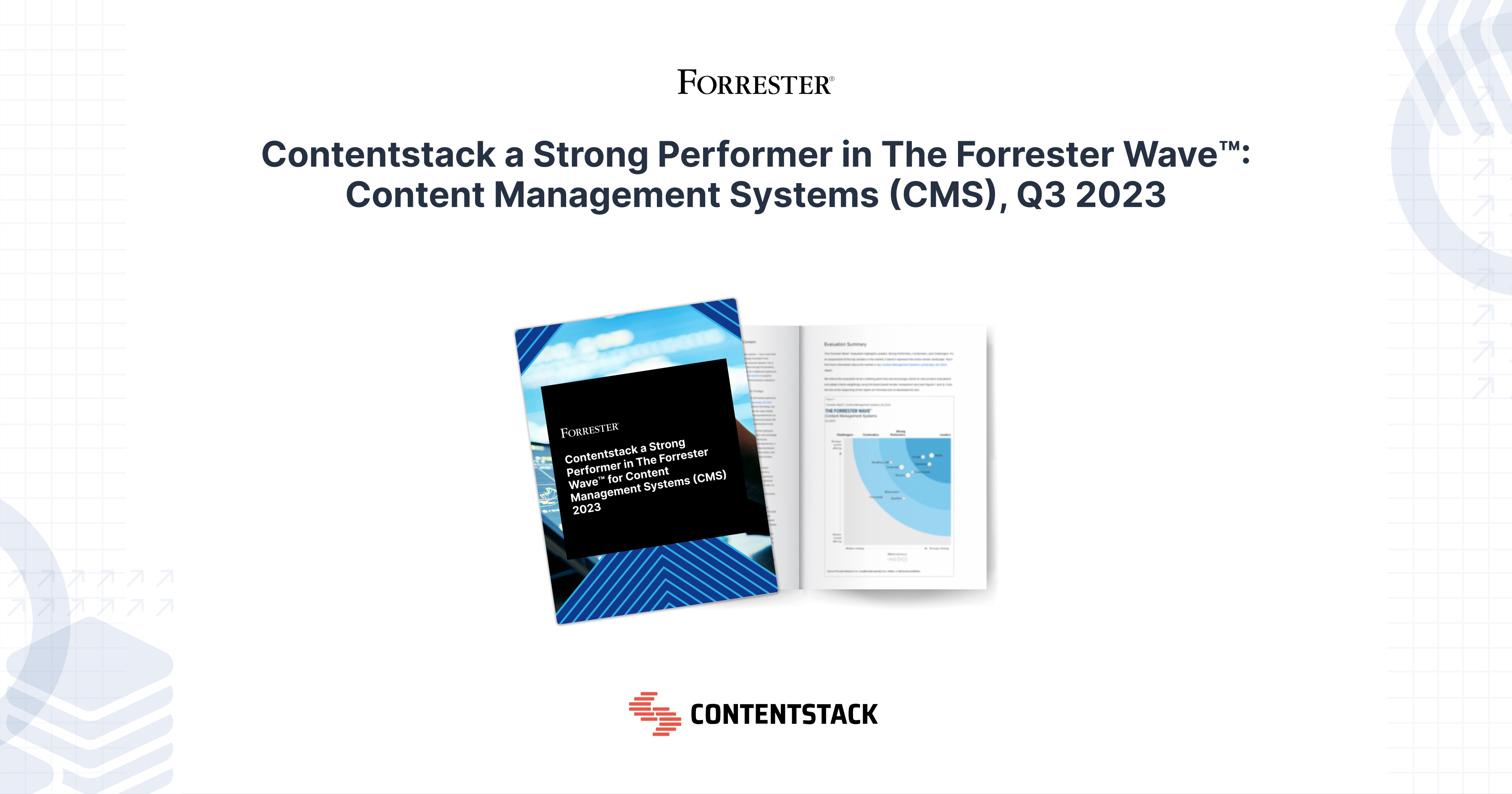Future-proofing responsive web design with headless CMS

Responsive web design is a design approach that enables a website to adjust its layout and content for any device or screen size. A headless CMS uses application programming interfaces (APIs) to deliver optimized content across multiple digital channels, providing organizations with increased content flexibility to adapt to various devices and screen sizes for responsive web design. Headless CMS can future-proof responsive web design by enabling quick adaptation to new technologies and devices without impacting the CMS structure or interrupting user experience.
Maintaining a competitive edge at the speed of technology can be challenging in the fast-moving digital age. Businesses must deliver exceptional digital content while ensuring customers have consistent experiences as they move from one device to another. To achieve this, content must be optimized for every device and every size screen.
Until recently, content had to be optimized for mobile devices like smartphones, tablets, and computer screens. However, the range of devices with display screens has expanded to include smartwatches, virtual reality (VR) headsets, and more. As we move into the future, this list will only grow.
The reality is that it’s no longer feasible for businesses to manually create and optimize their websites for every different device and screen size where it could be displayed.
This is where responsive web design comes in. Responsive web design ensures websites are easily accessible, no matter what device a user is viewing. Over time, this design approach evolved from single layouts to adaptive designs to today's standard, fluid designs, which must automatically be compatible with devices of different screen sizes.
This blog will look at the essential elements of responsive web design. Then, we’ll explain how headless content management systems (CMSes) can help businesses use responsive web design strategies to deliver improved omnichannel experiences.
What is responsive web design?
Responsive web design is a design approach that enables a website to adjust its layout and content for any device or screen size. This means regardless of the device where the website is viewed, users will experience the same content and functionality.
Responsive web design is not a new concept. Its origins go back almost as far as the internet and it has been covered by W3Schools, Kinsta, and Smashing magazine.
However, it has become increasingly important with the rise of mobile devices. Today, with so many different device screens beyond smartphones, the focus continues to shift from mobile to omnichannel experiences. For more on this shift, read our blog, “Does your CMS support Omnichannel?”
Three components of responsive web design
Responsive web design is about creating a website that responds to its environment and user behavior. Responsive web design consists of three main components. These are fluid grids, flexible images, and media queries. Here’s more on each one.
Fluid grids
Fluid grids are the cornerstone of responsive web design. They're based on proportional allocation, allowing elements on the page to be sized based on percentages rather than fixed pixel sizes. This ensures each element is scaled up or down depending on the screen size. Your website will look great on any device, whether an iPhone, laptop, or a giant jumbotron at a sports arena.
Flexible images
Flexible images are another critical component of responsive web design. Images of fixed sizes can distort and look unappealing on smaller screens. But by using responsive techniques to make images adaptable to different screen sizes, you can ensure they look good and maintain their resolution regardless of the device.
Media queries
Lastly, media queries are the code that allows a website to detect a user's device and adjust the website's layout accordingly. In technical speak, they apply Cascading Style Sheets (CSS) styles based on device type and specifications like screen resolution and browser viewport width.
Media queries ensure the website is optimized for the device, user preferences, and environment.
Responsive vs. reactive web design
Responsive web design automatically adjusts a website's layout and content based on the screen size. Reactive web design, on the other hand, is a design approach that enables real-time adjustments to static website content based on the device where the website is being viewed. Real-time adjustments are made based on triggers like a change in server data. However, these triggers are not based on user preferences.
The benefits of headless for responsive web design
While transitioning to a headless CMS from a traditional platform requires a shift in mindset, enterprises and mid-sized to large organizations can reap many benefits when they switch. Here are three of the most important benefits they can expect.
Adaptation and future-proofing
A headless CMS provides content flexibility, allowing the content to be seamlessly adapted to various devices and screen sizes for responsive web design. The headless CMS APIs enable structured content delivery, facilitating a responsive display across different devices. Content can be tailored to user devices and optimized for search engine indexing, improving SEO performance.
The separation between the front and back end of a headless CMS like Contentstack allows developers to work more efficiently with minimized design intricacies, accelerating the development process. A composable headless CMS can tailor the user experience across devices and deliver enhanced engagement and satisfaction.
Streamlined content management
One of the significant benefits of a headless CMS is streamlined content management. Since the content is treated as data, it can be stored and managed centrally in one place. This means the same content can be reused and repurposed across platforms and channels, saving development time and effort.
Furthermore, since the content can be accessed by multiple teams, whether they are marketers, developers, or designers, it becomes easier to create and publish content faster (no technical expertise required), improving the time-to-market.
Seamless user experience
A headless CMS contributes to a seamless user experience across devices. Since the content is managed and stored on the back end and adapts to the device when called up on the front end, the same user can access the same content and benefit from consistent experience regardless of the device they use. Better yet, the content can be personalized to them on the front end. For instance, the content can be delivered in their preferred language using localization software.
Making content more consistent, accessible, and engaging can lead to higher user retention rates, conversion rates, and increased traffic.
Future-proofing responsive web design
Lastly, a headless CMS can future-proof responsive web design by ensuring content remains adaptable to emerging devices and technologies. Since the headset and the presentation layer are disconnected, any changes in technology or devices can be easily integrated without affecting content management or delivery. The content can be quickly adapted to new devices, ensuring your website remains relevant and accessible to your audience.
A headless CMS can solve responsive web design challenges
Eliminating challenges in responsive web design with headless CMS
Responsive web design can be challenging, especially for developers who must become more familiar with the technique. Using media queries, flexible layouts, and flexible images requires expertise in programming languages like HTML, CSS, and JavaScript. However, with the help of a headless, composable CMS, many such challenges can be eliminated. This empowers developers to spend more time improving website functionality and user experiences.
The role of head CMS in responsive web design
A headless CMS is a back-end-only content management system that separates the front end (the website's visible part) and back end (the content management system's administrative part) of a website. The term “headless” means that rather than having the traditional CMS structure of being paired with a website, the back end is not connected to a static website. Instead, the back end can be connected via application programming interfaces (APIs) that deliver optimized content to various devices, enabling them to deliver a better user experience.
Benefits of content delivery APIs
These APIs provide a structured and consistent way to deliver content across multiple digital channels, such as websites, mobile apps, and social media platforms.
The structure of content delivery APIs also enhances the display, providing a more compelling layout across various devices. A headless CMS can generate optimal markup for individual devices, allowing maximum control over design elements like font size, column width, and spacing.
Customization of the content display with a headless CMS
Additionally, a headless CMS enables web developers to customize the content display based on the device's viewport width, making the content more accessible on mobile devices. This approach also allows for using media-screen and min-width queries to serve different content to different devices, creating a tailored user experience.
Advantages of a composable CMS in responsive Web design
A CMS that’s both headless and composable takes responsive web design to new heights by allowing developers to create a modular, flexible, and scalable website architecture. They can build front-end applications with pre-built modules like login forms, image galleries, or surveys.
Integration of composable CMS with a unique tech stack
They can also combine modules in various ways to create unique and personalized experiences across various devices. This approach enhances reusability, maintainability, and consistency across the entire website.
Also important, being composable means the CMS framework can be integrated with an organization’s unique tech stack, creating a fully customizable solution of best-in-breed solutions that can communicate seamlessly via APIs.
This makes it possible to easily upgrade to new solutions as technology advances into the future without changing your CMS and impacting user experience.
Learn more
A headless composable CMS is a powerful tool that can revolutionize how you manage and deliver content. By separating the content from the presentation layer, content can be seamlessly adapted to various devices and screen sizes, improving user experience and SEO performance.
Furthermore, streamlining content management, accelerating the development process, and future-proofing responsive web design ensures that your website remains accessible, engaging, and relevant, regardless of how technology advances. As always, consult a specialist to ensure that a headless CMS is the right choice for your business.
To see a demo of the Contentstack headless, composable CMS, schedule a free demo today.
About Contentstack
The Contentstack team comprises highly skilled professionals specializing in product marketing, customer acquisition and retention, and digital marketing strategy. With extensive experience holding senior positions at renowned technology companies across Fortune 500, mid-size, and start-up sectors, our team offers impactful solutions based on diverse backgrounds and extensive industry knowledge.
Contentstack is on a mission to deliver the world’s best digital experiences through a fusion of cutting-edge content management, customer data, personalization, and AI technology. Iconic brands, such as AirFrance KLM, ASICS, Burberry, Mattel, Mitsubishi, and Walmart, depend on the platform to rise above the noise in today's crowded digital markets and gain their competitive edge.
In January 2025, Contentstack proudly secured its first-ever position as a Visionary in the 2025 Gartner® Magic Quadrant™ for Digital Experience Platforms (DXP). Further solidifying its prominent standing, Contentstack was recognized as a Leader in the Forrester Research, Inc. March 2025 report, “The Forrester Wave™: Content Management Systems (CMS), Q1 2025.” Contentstack was the only pure headless provider named as a Leader in the report, which evaluated 13 top CMS providers on 19 criteria for current offering and strategy.
Follow Contentstack on LinkedIn.






.svg?format=pjpg&auto=webp)
.svg?format=pjpg&auto=webp)
.png?format=pjpg&auto=webp)






.png?format=pjpg&auto=webp)


